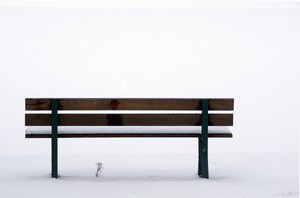Are you a seasonal drinker or drug user? Does the change from the light and heat of summer to the dark and cold of winter cause you to increase your drinking or drug using each year, possibly as a way to fight against those winter blues?
If yes, then you may be a seasonal substance abuser who uses drugs or alcohol as a way to self medicate your symptoms of Seasonal Affective Disorder (SAD).
Having SAD increases your risk of developing a substance abuse disorder and researchers say that some alcoholics tend to drink with some seasonality, likely as way to cope with feelings of depression related to SAD*.
Unfortunately, a large percentage of those with the disorder remain undiagnosed and untreated.
What Is SAD?
Seasonal Affective Disorder is a form of depression that occurs on a seasonal basis, most often beginning each year as the days shorten into winter, worsening over the winter season and lasting until the longer and warmer days of early spring (a less common form of SAD begins in spring and lasts through to the shorter days of autumn.)
Symptoms of SAD include:
- Feelings of depression
- Anxiety
- A loss of energy and feelings of heaviness in the body and limbs
- Feelings of hopelessness or despair
- Sleeping too much
- Withdrawing from social life to ‘hibernate’ at home
- Experiencing food cravings, especially for carbohydrate rich foods
- Experiencing weight gain
- Difficulty in maintaining concentration*
- Increased alcohol and drug use
Why Are People with SAD at Increased Risk of Alcoholism and Substance Abuse?
It is estimated that about 5% of Americans and 7% of those in the UK have SAD.* Many people with SAD do not receive an accurate diagnosis of their condition and as such go completely untreated. People with untreated or ineffectively treated SAD are at increased risk of self medicating their symptoms of depression with alcohol and other drugs.
Regular self medication with alcohol and illicit drugs greatly increases a person’s risk of developing a substance abuse disorder.
Who Is Most at Risk of SAD?
People most at risk of SAD include:
- People living in northern latitudes (or very southern latitudes below the equator) who experience greatly reduced sunlight during the winter months
- People with a family history of SAD
- Women
- People who spent much of their early life in areas near the equator and then immigrated to live in colder areas of the world seem to be at an increased risk of SAD
- Younger adults are more likely than older adults to experience a first incidence of SAD, and most people experience an age of onset before the age of 31*
Treatment
Do not self medicate your winter feelings with alcohol or drugs. You won’t achieve any lasting symptoms betterment and you are putting yourself at risk of alcoholism/drug addiction, which are potentially life threatening conditions.
The most common treatment for SAD is to sit in front of a specially designed high intensity light box for 15 to 30 minutes per day. These special light boxes emit UV light in quantities that approximate strong sunlight and many people find that after using this light therapy for only 3 to 5 days, SAD symptoms disappear or are reduced substantially.
Some people will not experience relief through light therapy alone and will need to substitute or complement light therapy with antidepressants and/or psychotherapy.
Most people will respond well to light therapy and since this therapy is so easily implemented into daily life and because the costs of treatment are so low (a light therapy box may retail for $100 - $200) there is really no reason to suffer with SAD and an increased risk of alcoholism and substance abuse – If you think you may be affected by the changing light levels of winter and if you think that you use drugs and alcohol as a way to compensate for these feelings, talk to your doctor today, before an easily treatable condition becomes something much more severe.
Page last updated Oct 19, 2011


